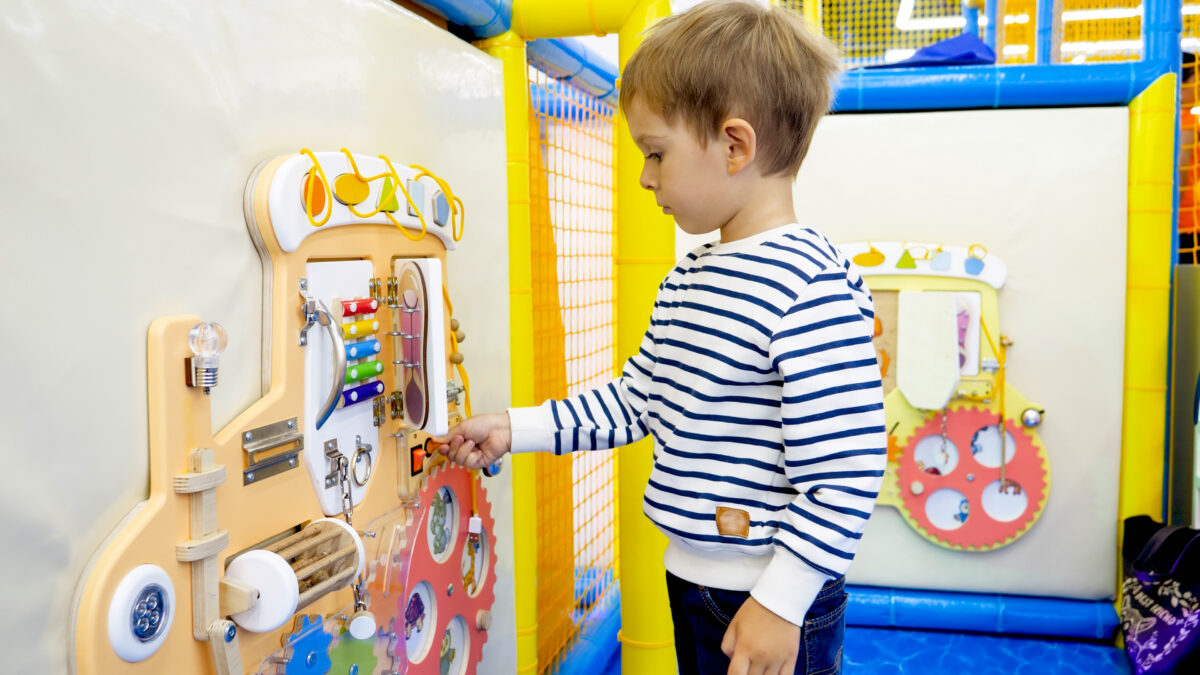
15 Incredible MUST-HAVE Sensory Toys for Autism TO IMPROVE REGULATION
Imagine a world where toys aren’t just for play, but for unlocking the potential of children with autism. In this ultimate guide, we dive into the realm of sensory toys for autism, uncovering the 15 essential tools recommended by occupational therapists for supporting the development of sensory skills in children with autism.
Whether you’re a parent, caregiver, or simply curious, this comprehensive article will equip you with the knowledge and resources to choose the right sensory toys for autism for your child’s journey towards growth and self-discovery.
This post was created by Marra Robert, OTD, OTRL and contains affiliate links.
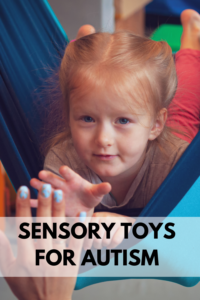
From fidget spinners to weighted blankets, this guide goes beyond the surface of traditional toys, exploring the profound impact they can have on a child’s sensory processing abilities.
Each section of this article delves into a specific sensory toy, providing in-depth reviews, expert insights, and even affiliate links to the best products available on the market. We leave no stone unturned in our quest to empower you with the tools to make informed decisions.
Hi! My name is Marra and I’m a mama and a pediatric occupational therapist who has years of experience working with children with autism and helping their parents navigate the ups and downs of child development.
I loved being a support person for parents learning about autism, sensory processing, and their child’s individual needs.
I would often recommend to families toys or sensory equipment to help improve their child’s sensory processing and developmental skills. I’d like to share the most common recommendations with you.
By the end of this guide, you’ll not only have a comprehensive understanding of each sensory toy but also an appreciation for the life-changing effects they can have on a child with autism.
Whether it’s fine motor skill development, body integration, or sensory regulation, these toys hold the key to unlocking a world of growth, independence, and self-discovery.
This post is all about the top sensory toys for autism., So join us on this adventure into the world of sensory toys for autism and equip yourself with the knowledge and tools to make a significant impact in the life of a child.
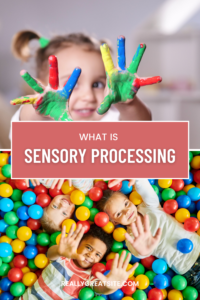
UNDERSTANDING SENSORY TOYS AND THEIR IMPORTANCE FOR AUTISM
Sensory toys are specifically designed tools that provide children with autism a sensory-rich experience to engage their senses and improve their sensory processing and regulation.
The power of sensory play cannot be underestimated, as it allows children to explore and discover new sensations, learn about cause and effect, and develop crucial social, cognitive, and physical abilities.
For children with autism who often struggle with sensory processing challenges, these toys offer a safe and supportive environment for them to gain control over their sensory experiences.
By engaging with sensory toys, they get their sensory needs met, learn to regulate their emotions, improve focus and concentration, and enhance their ability to interact and communicate with others.
So, as we delve into the top 15 sensory toys for autism, remember that these toys are so much more than mere playthings. They hold transformative power, offering a gateway to a world of growth, development, and endless possibilities for children with autism.
Harness the power of sensory play and embark on a journey that promises growth, development, and a future filled with endless possibilities. It all begins with the right sensory toy. Let’s explore and ignite the senses today!,
If you are new to the world of autism, check out the post below.

THE TOP 15 SENSORY TOYS FOR AUTISM
1. FIDGET BOARDS MULTI-SENSORY ENGAGEMENT
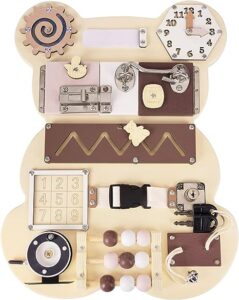
Fidget boards are more than just trendy gadgets; they offer multi-sensory engagement that can greatly benefit children with autism.
The repetitive motion of many of the fidgets on these boards can help children with autism focus and concentrate, making it an excellent tool for reducing anxiety and improving attention span during a sensory break for activities after..
The tactile, auditory, and visual sensory input that these fidget boards provide also offers a calming effect, helping to regulate emotions and promote relaxation.
When selecting a fidget board fora child with autism, consider the size, weight, and material of the toy to ensure it is suitable for your child’s needs and preferences.
The example I’ve given above is just one option of a sensory board, there are all different shapes and size to fit your child’s needs.
2. sensory balls
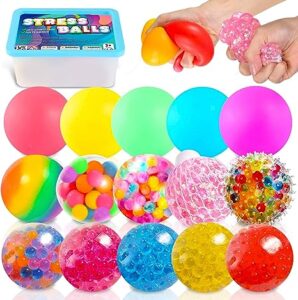
Sensory balls are a fantastic tool for providing tactile stimulation and engaging children with autism in social play.
These balls come in various shapes, sizes, and textures, allowing therapists to customize the sensory experience to meet each child’s unique needs.
The tactile sensations offered by sensory balls can range from soft and squishy to bumpy and textured, providing a diverse sensory input that can be both calming and stimulating.
During play, you can use sensory balls in a variety of ways to promote tactile stimulation.
For example, they can encourage children to roll the balls between their hands, feeling the different textures and noticing the changes in pressure as they squeeze and release.
This not only engages the sense of touch but also helps improve fine motor skills and hand-eye coordination.
3. Weighted Blankets: Deep pressure input
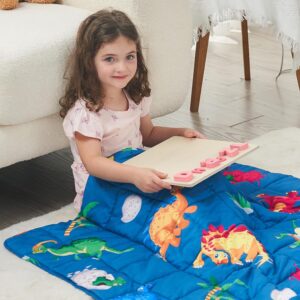
Weighted blankets are a popular tool used in occupational therapy for individuals with autism, particularly for those who benefit from deep pressure sensory input.
The blankets are designed to provide a calming and soothing effect by applying gentle pressure to the body. This deep pressure stimulation has been found to have a positive impact on sensory processing and regulation.
This deep pressure sensory input activates the body’s natural relaxation response, helping to reduce anxiety, promote feelings of security, and improve overall well-being.
For individuals with autism who may experience heightened sensory sensitivity or difficulty with self-regulation, the use of a weighted blanket can be particularly beneficial.
If you would like to know more activities to do with your child that provide them with this deep pressure input check out the post below on heavy work activities.
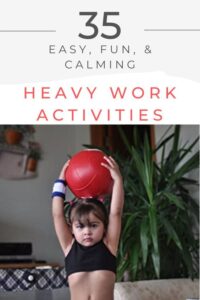
4. Chewable necklaces

As we continue our exploration of sensory toys for autism, we now turn our attention to chewable necklaces and their role in oral sensory input.
Just as weighted blankets provide deep pressure input, chewable necklaces offer a unique form of sensory input that can be incredibly beneficial for individuals with autism.
Every child has unique sensory needs and providing deep pressure oral sensory input and help some children regulate their sensory processing and promote focus and relaxation.
Chewable necklaces are specifically designed to provide a safe and appropriate outlet for individuals who have a need for oral sensory input.
They are made from non-toxic materials that are safe to chew on and are available in various shapes, sizes, and textures to cater to individual preferences.
By allowing individuals to chew on these necklaces, oral stimulation therapy can have several positive effects. Firstly, it can serve as a calming tool, helping to reduce anxiety and stress levels.
Many individuals with autism find chewing to be soothing, as it can release tension and provide an outlet for excess energy. This can contribute to a sense of calm and improved focus during occupational therapy sessions.
Chewable necklaces can also serve as a self-regulation tool, providing individuals with a way to manage their sensory needs independently.
Rather than seeking alternative, potentially harmful objects to chew on, such as pencils or clothing, individuals can use these necklaces as a safe and appropriate alternative.
This not only protects their teeth and clothing but also promotes a sense of empowerment and self-control.
5. Sensory Brushes
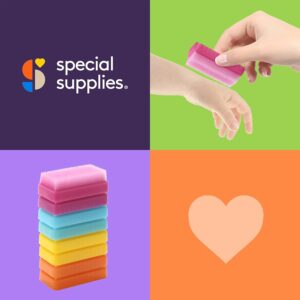
Sensory brushes are specially designed tools that offer a range of tactile experiences.
Their bristles are gentle yet firm, providing a deep pressure touch that can help promote a sense of relaxation and comfort. By applying even pressure to the skin, these brushes can assist in reducing anxiety and stress levels.
It’s important to note that the use of sensory brushes should always be done under the guidance and supervision of a licensed occupational therapist.
These professionals can tailor the techniques and applications of the brushes to meet the specific needs of each individual. They can also provide guidance on how to introduce and incorporate the brushes into a comprehensive sensory integration plan.

6. sensory bottles
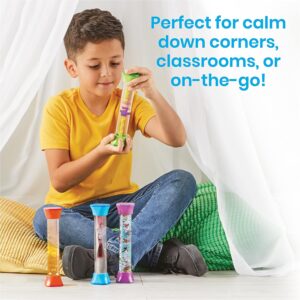
Sensory bottles are typically made from clear plastic or glass and filled with a variety of captivating materials. From colorful beads and glitter to water and oil, these bottles create a mesmerizing visual display that can capture the attention and focus of children with autism.
As they tilt and turn the bottle, they are able to observe the swirling patterns and movement of the contents inside, fostering a sense of curiosity and engagement.
In addition to visual stimulation, sensory bottles also provide auditory exploration. By incorporating small items like bells, buttons, or beans, the bottles produce soothing sounds as they are manipulated.
The gentle rattling or swishing noises can be both calming and intriguing, helping to improve auditory processing skills and sensory integration.
7. THeraputy
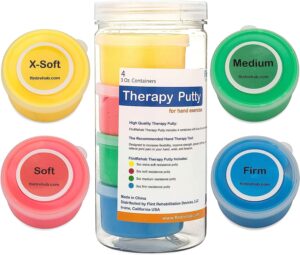
Therapy putty is another great sensory toys for autism. It is a pliable material that comes in different strengths to cater to varying levels of hand strength and dexterity.
It is commonly used in occupational therapy sessions to help improve hand coordination, grip strength, finger isolation, and overall finger and hand strength.
Through the manipulation and squeezing of therapy putty, individuals with autism can enhance their fine motor skills while also experiencing a sensory-based stimulation.
One of the main benefits of therapy putty is its ability to provide a safe and controlled space for individuals with autism to explore and improve their fine motor abilities.
The putty’s malleable nature allows users to mold it into different shapes, such as balls or snakes, encouraging them to use their fingers and hands in a purposeful and controlled manner.
This type of repetitive and focused activity can help enhance finger and hand strength, as well as promote coordination and dexterity.
In addition to its physical benefits, therapy putty also offers individuals with autism a means of self-regulation and sensory stimulation.
The tactile feedback and deep pressure input provided by the putty can be soothing and calming for individuals who may experience sensory sensitivities or seeking behaviors.
It can provide a grounding and reassuring sensation, helping individuals with autism regulate their emotions and focus their attention.
Occupational therapists often incorporate therapy putty into their sessions by creating specific exercises and activities tailored to the individual’s needs and goals.
These exercises can involve tasks such as pinching the putty between the fingers, rolling it into small balls, hiding objects within the putty for the individual to find, or using various tools like tweezers or small toys to interact with the putty.
By engaging in these activities, individuals with autism can improve their hand-eye coordination, finger strength, and overall fine motor skills.
8. Balance Board
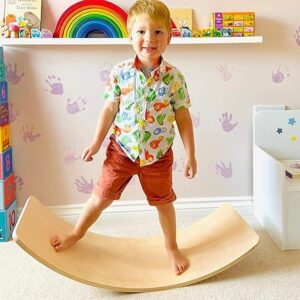
Balance boards are another great sensory toys for autism used by occupational therapists to provide vestibular stimulation for individuals with autism.
Vestibular stimulation refers to the activation of the body’s vestibular system, which is responsible for sensing movement, balance, and spatial orientation.
By incorporating balance boards into therapy sessions, individuals with autism can improve their sensory processing abilities and enhance their overall body control.
One of the main benefits of using balance boards is their ability to engage and strengthen the core muscles.
As individuals with autism work to maintain their balance on the board, they activate their abdominal and back muscles, leading to improved posture and stability. This can have a positive impact on their overall motor skills and coordination.
In addition to core muscle strengthening, balance boards also help individuals with autism develop their proprioception skills. Proprioception is the body’s ability to sense and understand its position in space.
By constantly adjusting their body position and weight distribution on the board, individuals with autism can enhance their proprioceptive awareness, leading to improved body integration and spatial orientation.
Balance boards can be used in a variety of ways to cater to individual needs and goals. Occupational therapists may incorporate specific exercises such as standing or kneeling on the board while engaging in reaching or catching activities.
They may also encourage the use of additional sensory tools, such as weighted balls or textured mats, to further challenge and stimulate the individual’s sensory system.
9. Sensory Swing
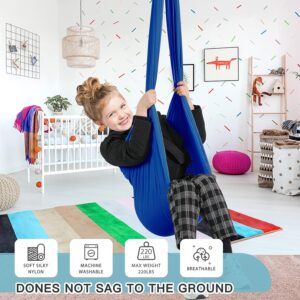
Sensory swings are powerful sensory toys for autism that provide a unique and therapeutic experience by allowing children to engage in dynamic movement while experiencing a deep sense of sensory integration.
Sensory integration is a fundamental aspect of sensory processing and refers to the ability to effectively receive, interpret, and respond to sensory information from our body and surroundings.
For individuals with autism, this process can be challenging, making sensory swings a valuable tool in occupational therapy.
Sensory swings come in various designs, but they all share a common goal of providing deep pressure and movement sensory input.
The gentle swinging motion provides calming movement input. This provides individuals on the autism spectrum a calming and organizing effect on their sensory system.
]Occupational therapists often incorporate sensory swings into therapy sessions to address various sensory challenges. The swings can be particularly beneficial for individuals who struggle with body awareness, coordination, and self-regulation.
By using the swings, therapists can help individuals develop a better understanding of their body in space and improve their ability to plan and execute movements.
10. Tunnels
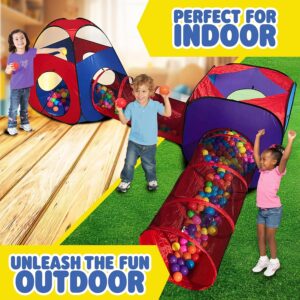
Sensory tunnels are sensory toys for autism used by occupational therapists to enhance the sensory therapy experience for individuals with autism.
These tunnels, often made of fabric or other soft materials, create a safe and enclosed space that allows individuals to explore and interact with their environment in a controlled and structured way.
By engaging in activities within the sensory tunnel, individuals can develop an improved sense of spatial awareness and gain a better understanding of their body in relation to the surrounding space.
Similar to sensory swings, sensory tunnels provide movement and deep pressure input, promoting sensory integration and sensory processing skills.
As individuals crawl, roll, or maneuver through the tunnel, they receive deep pressure input, which helps them develop a stronger sense of where their body is in space.
Occupational therapists often incorporate sensory tunnels into therapy sessions to target specific goals related to spatial awareness and body integration.
By engaging in activities within the tunnel, individuals can practice navigating different spaces, learn to interpret visual cues, and enhance their sense of balance and coordination.
11. Sound Machine
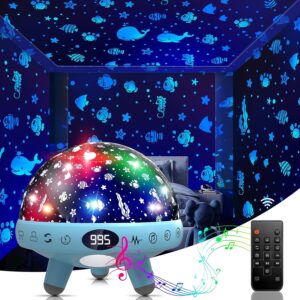
Through the strategic use of sound machines, therapists can help individuals with autism regulate their auditory experiences and create a calmer and more focused environment for therapy sessions.
Sound machines are not only commonly used in homes and bedrooms for promoting sleep, but they can also be an effective tool in occupational therapy sessions for individuals with autism.
These machines emit a variety of sounds, such as white noise, nature sounds, or soothing melodies, which can help mask or minimize background noises that may cause sensory overload or distract from therapy goals.
For individuals with autism, who may have heightened sensitivities to noises, it is crucial to create an environment that is conducive to their specific needs.
By using sound machines, occupational therapists can help regulate the auditory experiences of their clients, reducing the impact of external sounds and creating a more soothing and controlled atmosphere.
This can minimize sensory overload and distractions, allowing individuals to better focus on therapy tasks and goals.
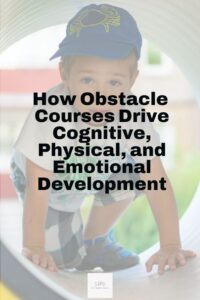
12. VISUAL TIMERS
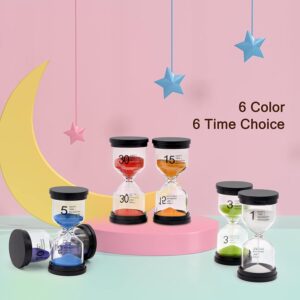
Visual timers are helpful sensory toys for autism. Time management can be a challenging skill for many individuals with autism, as they may struggle with understanding the passage of time or planning and organizing their daily activities.
Visual timers provide a tangible and visual way for individuals with autism to better grasp the concept of time and effectively manage their schedules.
One of the key benefits of using visual timers is their ability to provide a clear and structured representation of time. Unlike traditional analog or digital clocks, visual timers offer a visual countdown that individuals with autism can easily understand.
13. Sensory Mats
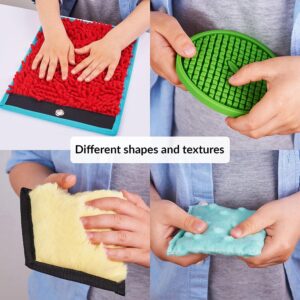
Sensory mats are essential sensory toys for autism, as they provide a unique tactile experience that can promote sensory exploration and integration.
These mats are designed to offer a variety of textures and sensations, allowing individuals to engage their sense of touch in a safe and controlled environment.
One popular type of sensory mat is the textured mat, which features different textures, such as bumps, ridges, and grooves, that individuals can run their hands or feet over.
The varying textures provide a range of tactile sensations, helping to stimulate the sensory receptors and improve sensory processing abilities. This can be particularly beneficial for individuals with autism who may have difficulties with sensory integration and regulation.
14. SENSORY KITS
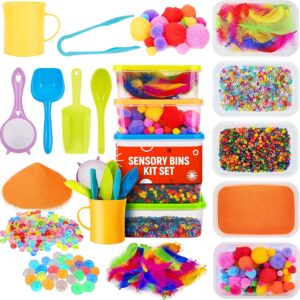
Sensory kits have proven to be incredibly versatile sensory toys for autism Offering a range of benefits, they are used in various ways to facilitate relaxation, sensory exploration, and desensitization.
By providing tactile sensations and promoting sensory integration, sensory kits play a vital role in enhancing the overall effectiveness of therapy activities.
They aid in the development and regulation of sensory functions, helping individuals with autism better navigate their surroundings and engage in meaningful interactions.
15. Sensory table
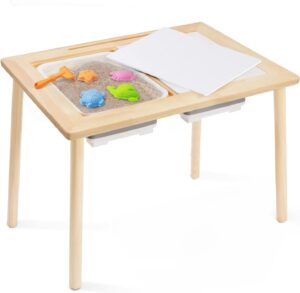
By providing a safe and inviting space for sensory exploration, sensory play tables are crucial sensory toys for autism.
The sensory play table is designed to provide a multi-sensory experience, incorporating various textures, colors, and materials that individuals can touch, manipulate, and explore.
One of the key benefits of the sensory play table is its ability to promote tactile exploration.
By incorporating different textures and sensory materials such as sand, water, or objects with various tactile properties, the table allows individuals to experience different sensations through touch.
This hands-on exploration helps to enhance sensory integration, improve fine motor skills, and promote cognitive development.
Sensory toys for autism are invaluable tools. This comprehensive guide has highlighted the top 15 sensory toys for autism that support sensory development, from fidget spinners to sensory mats.
Whether it’s improving fine motor skills, promoting sensory integration, or regulating sensory input, the right toys can make a profound impact on your child’s development. Embrace the power of sensory play today and provide your child with the essential tools they need to thrive.
